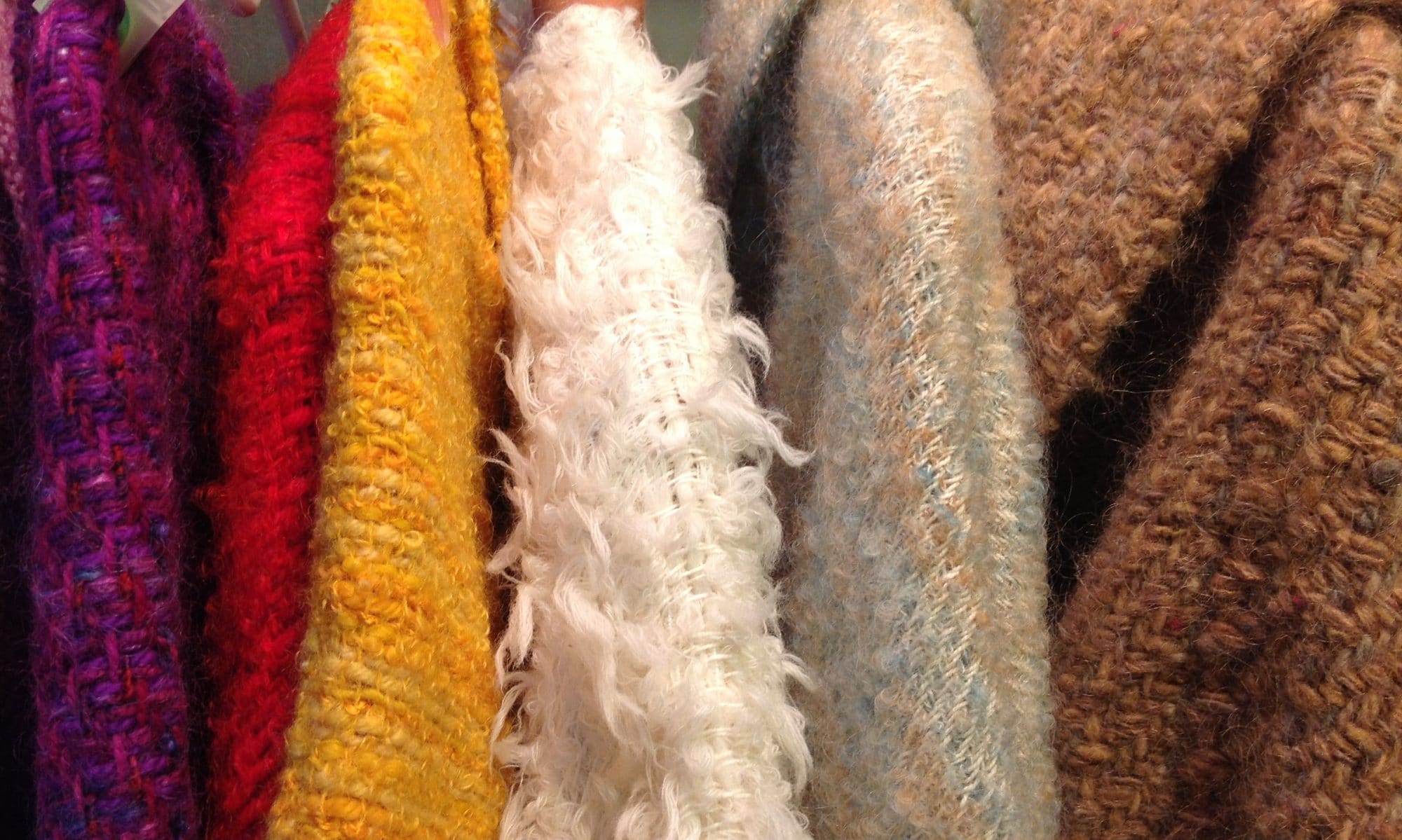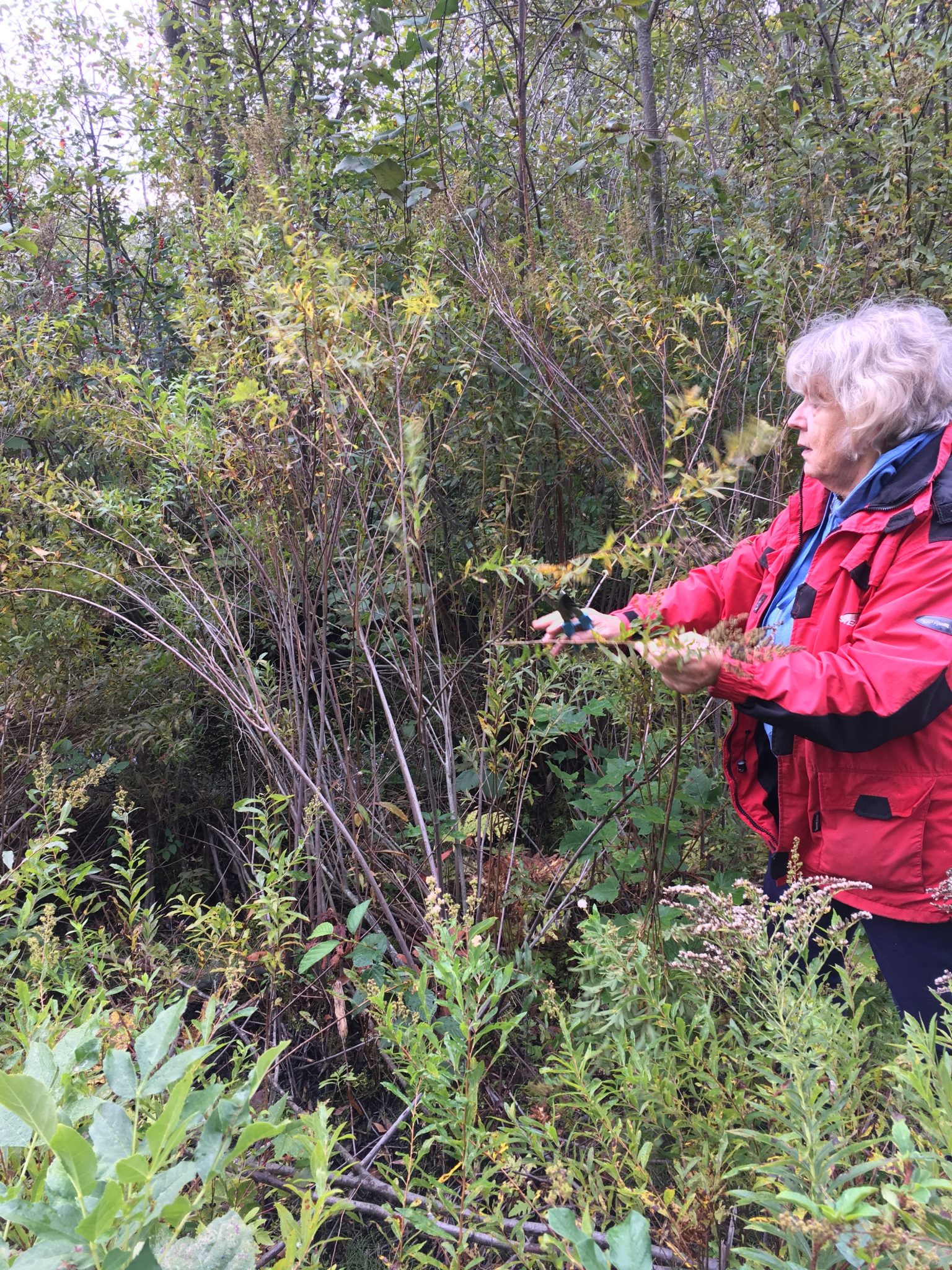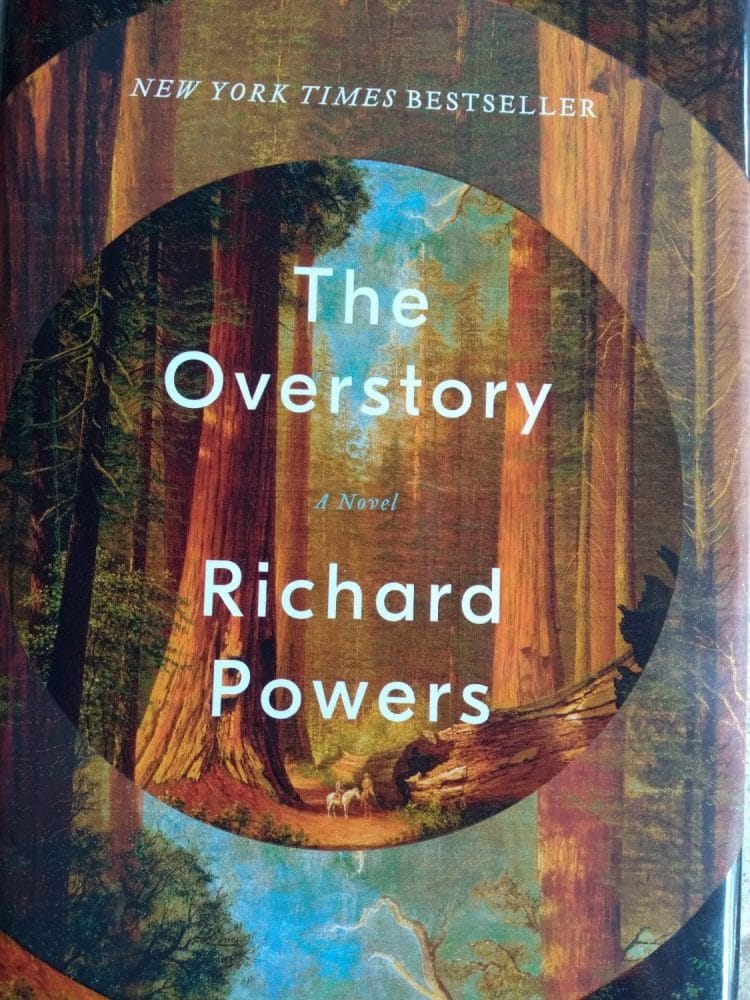All baskets are made by hand, they cannot be made by machine, and I think that is the first reason so many people respond to baskets, they can see the hand of the maker. The materials for traditional baskets come from plants and are gathered from forests and wetlands, and I think people respond to that as well, something from nature in our often plastic and urban lives. I remember taking a class from a Maori basket maker and she said, “this is the song we sing when we gather the flax” and she threw back her head and sang out something ancient and beautiful . Baskets go way back in time, they predate pottery. There is a connection with the past in every basket. Its also a very meditative process, to create something by hand, working in a group or singly, both can be stimulating, calming, satisfying, many feelings and emotions can occur simultaneously. All these aspects together means there is something so spiritual connected with the basketry process.
I have felt a deep association with nature and the outdoors as I have perused my interest in basketry. I often think I cannot make a basket that is more beautiful than the tangle of wild vines, berries and grasses that I find in my gathering ground, a near by fen.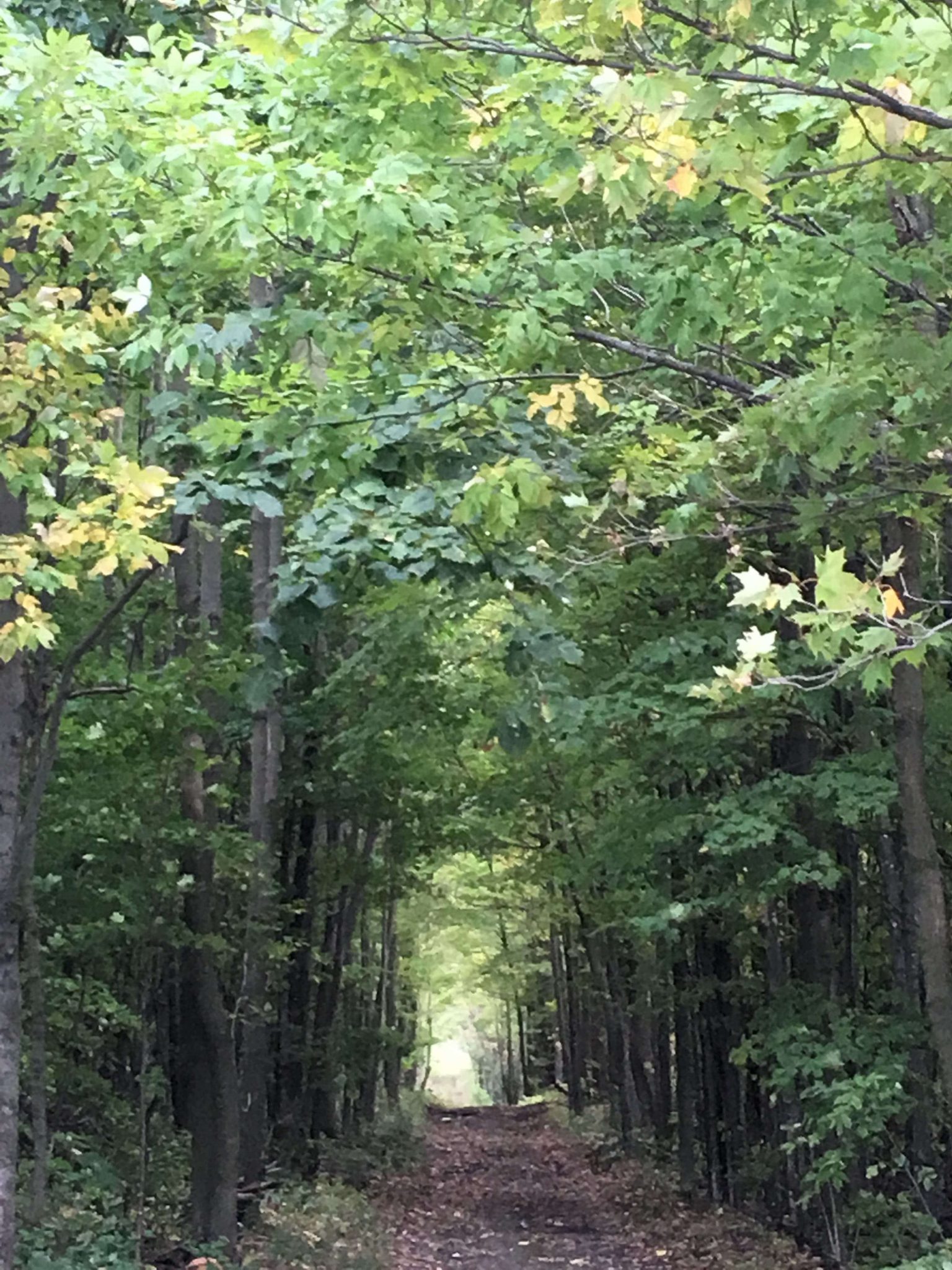 I also love the way plants and flowers create a mood, just by being themselves! My baskets always try to incorporate the beauty of nature, loosely but strongly twisted into a shape that I create, all the while cooperating with what a plant will and will not allow. Its always a compromise.
I also love the way plants and flowers create a mood, just by being themselves! My baskets always try to incorporate the beauty of nature, loosely but strongly twisted into a shape that I create, all the while cooperating with what a plant will and will not allow. Its always a compromise.
Melinda Mayhall used to say she taught self assertion for basket makers, but I think its more a game of give and take. I took a lot of willow classes from Jule Koch, I told her I wanted to learn how to not fight with willow. She indicated it was always quite an effort to use willow. Its a miracle to me how people can make such even, perfectly shaped baskets with willow and other plants which have very irregular forms. I am not so interested in creating even and perfect shapes, but totally respect the skill that they take.
There are so many conventional and unconventional basketry materials that grow in Eastern Ontario/Western Quebec. I have enjoyed learning how to use them and enjoyed as well teaching others. A teacher always learns from their students, and I enjoy seeing how individual everyone’s work is.
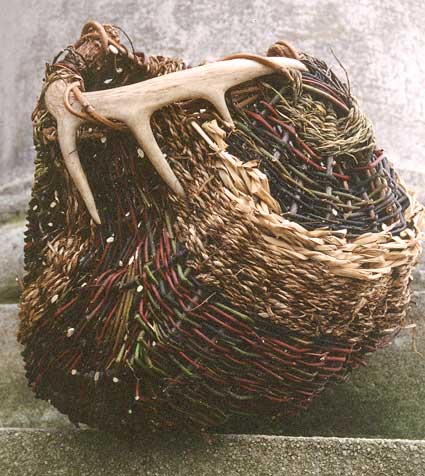 This basket was a real breakthrough for me. I found all the components adjacent to each other, the antler, the wild willows, the grasses. It felt very spiritual to me. It was purchased by an Anglican Priest who wanted to use it in healing ceremonies.
This basket was a real breakthrough for me. I found all the components adjacent to each other, the antler, the wild willows, the grasses. It felt very spiritual to me. It was purchased by an Anglican Priest who wanted to use it in healing ceremonies.
have read some books lately that have given me a lot of information about the ways trees and plants communicate with each other and with us. I am totally amazed, and yet, don’t we know this. Forest Bathing, being in the woods is so healing.
I am always looking for found objects to incorporate into my baskets. Perfect shells with no holes in them no longer have any appeal. Dried flowers, seed pods, grasses all add such texture. I have an enormous collection of sea shells, drift wood, etc. that I rediscovered when we moved, and am planning a large basket workshop for this autumn where I can share these materials with my students. I do not think I can live long enough to use them up myself.
It would be wonderful to spend a day making baskets with you.
